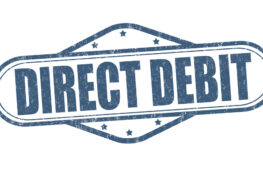Making time to look over your financial reports each month is an important task for any business owner. If you are not taking the time to do this, either because you’re too busy or perhaps you don’t really understand what you’re looking at and it doesn’t make sense to you, then here are six reasons we recommend that you should start to.
- Understand your business better – by looking at your Profit and Loss (“P&L”) report monthly you will get a good picture of how your business is performing month by month and it will provide a better understanding of what makes up your profit. Looking at revenue and expenses clearly on one page in a monthly P&L or comparing periods, this will help to identify trends in your data and may also help to highlight anomalies in coding/categorising.
- Accurate information for lending purposes – if you are applying for a loan or an overdraft, the bank or financial institution will look closely at both your Profit and Loss report and the Balance Sheet as a lot can be learned about a business by looking at these reports together. If you are unsure what some of your balances are in your accounts, get in touch and we can explain them further.
- Get paid quicker and reduce bad debts – by looking at your Accounts Receivable Aged Summary each month you can follow up with overdue accounts promptly which often results in getting paid quicker. The longer an overdue amount is left unpaid the higher the risk of it not being paid at all, so it is important to keep on top of this.
- Better relationships with your suppliers – assuming you are entering your supplier bills into your accounting software (recommended for most businesses to get an accurate profitability figure) your Aged Payables report will alert you to any unpaid or overdue amounts. Supplier relationships are an important aspect of your business and paying on time is crucial to maintaining those relationships.
- Better cashflow – having an accurate understanding of how much money the business is owed and how much money the business owes, can help with cashflow planning to ensure that there is enough money when needed. Additionally, understanding the trends of your business, its profitability drivers, expenses, etc., can help to plan sales and marketing campaigns so that the revenue keeps coming in.
- Better business decision making – your financial reports tell the story of your business and it’s important that you understand the story that they are telling you. The better you understand what’s going on in your business the stronger position you will be in to make better business decisions that affect the profitability of your business and its financial viability.
Depending on the complexity of your business, at a bare minimum you should be looking at the following reports:
- The Statement of Financial Performance, also known as the Profit and Loss report (P&L) or the Income Statement. As the name suggests, it’s how your business is performing over a period of time, such as a month or a financial year. In broad terms it shows the revenue that your business has generated, less the expenses for that same period. In other words, it shows how profitable your business is.
- The Statement of Financial Position, also known as the Balance Sheet. This shows the value of the business’s Assets, Liabilities and Equity.
- Assets include things like money in bank accounts, Plant and Equipment, Accounts Receivable balances
- Liabilities include things like Bank loans and credit cards, Accounts Payable, and Hire Purchase balances
- Equity is the difference between your Assets and Liabilities and includes Retained Earnings and Owner Funds Introduced
- Accounts Receivable Ageing report (Aged Receivables) shows how much money is still owed to the business as at a certain date in time, and is usually segmented as to how overdue they are or sometimes by how far past the invoice date they are. Generally you will have Current, 30, 60 and 90 days columns.
- Accounts Payable Ageing Report (Aged Payables) shows who the business owes money to as at a certain date in time and, like the Accounts Receivable Ageing report, is usually segmented by overdue period.
So why bother?
If you would like to know which reports are relevant to your business and you want to better understand what’s going on in your business, then get in touch so we can make a time to go through them with you.
Your business success is important to us and we are here to help you.



